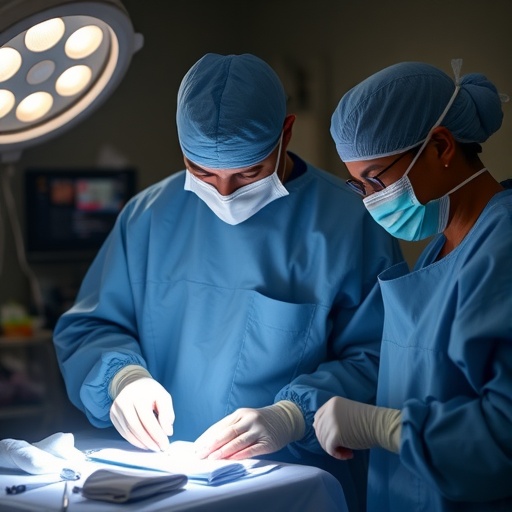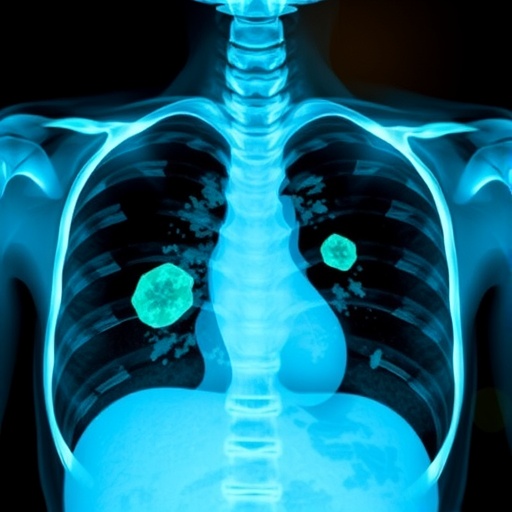Mortality rates following emergency abdominal surgeries for traumatic injuries reveal a startling global disparity, placing patients in underdeveloped nations at a markedly higher risk of death compared to their counterparts in wealthier countries. This discrepancy, uncovered through an extensive international analysis, exposes critical gaps not only in surgical outcomes but also in access to life-saving interventions and preoperative diagnostics. The implications of this divide extend far beyond the operating room, highlighting systemic inequities within healthcare infrastructures worldwide.
A pioneering study recently published in The Lancet Global Health delves deeply into these variations, revealing that the likelihood of death within 30 days after emergency trauma laparotomy is more than three times higher in the world’s least developed countries relative to the most affluent regions. This unsettling statistic underscores the urgent need to scrutinize the multifaceted factors contributing to such disparities and to rethink how trauma care systems can be improved in resource-limited settings.
At first glance, crude mortality rates appear deceptively homogeneous across global settings, averaging around 11%. However, when the data are rigorously adjusted for patient risk factors, significant contrasts emerge. Patients in low Human Development Index (HDI) countries face a mortality risk that is more than threefold greater than those in the highest HDI countries, while those in middle-HDI nations experience nearly double the risk. These findings suggest underlying systemic challenges that blunt the effectiveness of trauma surgery in less developed regions.
The Global Outcomes After Laparotomy for Trauma (GOAL-Trauma) study, led by the University of Cambridge in collaboration with an international network of clinicians and researchers, forms the empirical foundation for these insights. This large prospective observational cohort study analyzed data from 1,769 patients across 187 hospitals in 51 countries. The geographic scope ranged from conflict zones such as Ukraine and the Occupied Palestinian Territories to advanced trauma centers across Europe and North America, making this the most comprehensive global examination of surgical trauma outcomes to date.
The procedures examined—emergency trauma laparotomies—are critical surgical interventions aimed at controlling bleeding and repairing internal abdominal injuries frequently caused by road traffic accidents, stabbings, or gunshot wounds. Such procedures are time-sensitive and demand prompt, precise clinical decision-making often supported by advanced diagnostic imaging and perioperative care infrastructures.
Interestingly, the study uncovered that among patients who did undergo surgery, the severity of their injuries was generally lower in low-HDI countries compared to those in middle- or high-HDI settings. This unexpected pattern suggests a grim reality: the most severely injured individuals may be dying before reaching medical facilities or are not accurately diagnosed upon arrival. Such pre-hospital and early hospital care deficiencies likely contribute substantially to the survival gap observed.
Lead author Dr. Michael Bath from Cambridge’s Department of Engineering emphasizes this sobering point, noting that “a survival gap begins before patients even reach the operating theatre.” Potential reasons include delayed or absent pre-hospital critical care, limited transport infrastructure, and diagnostic challenges – all of which may hinder timely and appropriate surgical intervention for critically injured patients.
Moreover, the study highlights stark inequities within hospital care itself, pointing out the uneven distribution of diagnostic modalities such as computed tomography (CT) scanning. In developed settings, over 75% of patients had access to preoperative CT scans, which are pivotal for accurate injury assessment and surgical planning. Conversely, in low-HDI countries, fewer than 25% of patients benefited from this technology, hampering clinicians’ ability to identify and prioritize life-threatening injuries accurately.
Such diagnostic bottlenecks are compounded by resource constraints including diminished intensive care capabilities, shortages of skilled surgical personnel, and limited perioperative monitoring tools. These deficiencies collectively undermine the quality of trauma care, reducing survival chances even when patients reach operative intervention.
The GOAL-Trauma authors propose that overcoming these disparities requires coordinated improvements across the entire trauma pathway, rather than isolated enhancements in transport speed or diagnostic availability. Comprehensive trauma system strengthening should encompass emergency medical services, hospital resources, surgical training, perioperative care, and rehabilitation services to ensure critically injured patients receive holistic, timely, and evidence-based care.
Dr. Daniel U. Baderhabusha, co-author and trauma surgeon from the Democratic Republic of Congo, underscores the practical implications of these findings. He suggests that “designing equitable trauma systems adapted to local realities” is paramount. This involves tailoring interventions to resource settings and leveraging local expertise to optimize care delivery and patient outcomes.
Senior author Dr. Tom Bashford reflects on the global collaboration underpinning the GOAL-Trauma study, praising the dedication of clinicians working under extreme conditions to contribute data and insights. Their collective effort represents a significant step toward creating a comprehensive evidence base that can inform global health policy and guide investments in trauma care infrastructure.
In summary, the GOAL-Trauma study sheds light on profound global inequalities in trauma surgery outcomes, exposing a survival gap that is both a symptom and a consequence of broader systemic challenges. Addressing these disparities will demand sustained commitment, innovation, and equitable resource allocation to build trauma care systems that are both accessible and effective worldwide. The ultimate goal is to ensure that critical injury victims, regardless of where they live, receive the best possible chance for survival and functional recovery.
Subject of Research: Global disparities in trauma laparotomy outcomes and healthcare system factors affecting survival after emergency abdominal surgery for traumatic injuries.
Article Title: Global variation in patient factors, interventions, and post-operative outcomes for those undergoing trauma laparotomy: an international prospective observational cohort study
News Publication Date: 16-Sep-2025
Web References:
10.1016/S2214-109X(25)00303-1
Keywords: Traumatic injury, Surgery, Surgical procedures, Public health
Tags: abdominal trauma surgery mortality ratesaccess to surgical care in developing nationsemergency surgery outcomes in low-income countriesglobal health disparities in surgeryHuman Development Index and health outcomesimpact of healthcare infrastructure on mortalityimproving trauma care in impoverished nationsinternational analysis of surgical mortalitypreoperative diagnostics in resource-limited settingssurgical intervention disparities by regionsystemic inequities in global healthcaretrauma care systems in underdeveloped countries





